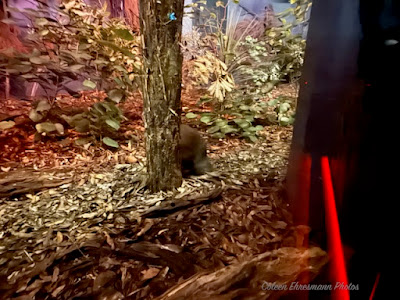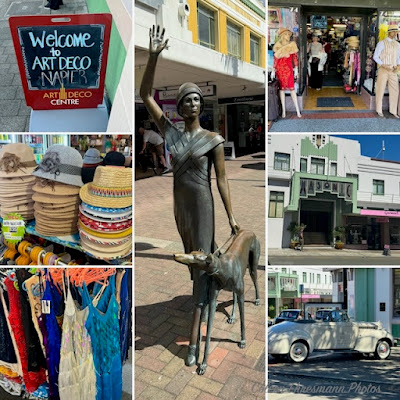Once again after finding the necessary geocache(s) and some exploring and shopping the three of us headed to the National Aquarium of New Zealand in Napier. I had canceled an NCL excursion offering sightings of Little Blue Penguins and Yellow-Eyed Penguins when they came ashore at the end of the day. Since we had to be back at the ship before 5 PM and because sightings of Yellow-Eyed Penguins have been reduced by 70% in the last year, I felt the price was not worth it for MAYBE sightings. So when we saw Little Blue Penguins were at the Napier Aquarium, we agreed to check it out.
We are retired educators enjoying the next phase in our lives. Traveling, geocaching and time with family and friends are how we spend our retirement days. We are enjoying the adventures of life after our working years.
Saturday, April 13, 2024
National Aquarium of New Zealand
lots of little penguins in rehab at the aquarium
Korora (Maori) or Little Blue (New Zealand) or Fairy Penguins (Australia) are the smallest penguins in the world. They are native to New Zealand and South Australia.
They can dive to about 50 meters and can hold their breath for up to 2 minutes while foraging for small shoaling fish, squid and crustacean species in the ocean.
The penguins are fed three times a day at the aquarium, each receiving a special diet based on their needs.
They stand about 12 inches high and weigh about 3 pounds and live to be 8-10 years old. They get their name Little Blue from their size and the blue color of their feathers.
Little Penguins are at the Aquarium because they need help from the Aquarium’s specialist staff. They arrived as abandoned chicks, victims of dog attacks, partially sighted, or have become sick in the wild. Some are missing flippers due to getting caught in fishing nylon.
Some are released back into the wild and others are permanent residents. These flightless birds have around 10,000 feathers!
We were delighted to see a kiwi (nocturnal flightless bird) at the Aquarium. The birds were so fast scurrying from one end of the glass enclosure to the other, they were very hard to photograph. Besides, it was very dark in the Nocturnal Tunnel! Kiwis are the smallest member of the ratite family which includes ostrich, rheas, emus and cassowaries. Kiwi are native to New Zealand.
I never did see the long beak. The kiwi is hiding behind the tree in this photo. Kiwi have a highly developed sense of smell and very poor eye sight. The largest species is about 18 inches tall and the smallest about 10 inches. Their weight varies from 7 pounds to about 3 pounds for the smallest kiwi. Their wings are so small they are nearly invisible beneath their bristly, hair-like feathers.
This male seahorse is carrying the eggs during the gestation period of a couple of weeks. It will dispel the frys (baby seahorse) from its pouch. Although they can swim forward, backward, up and down, seahorses are very slow swimmers having only one small dorsal fin.
The hawksbill sea turtle is an endangered species sea turtle.
OFD holding a stuffed kiwi in the gift shop of the National Aquarium. We both resisted the temptation.
The Maori who settled in this area relied on fishing as a way of life. Captain Cook 'discoverd and documented' the natural harbor in 1769. Traders, whalers and missionaries were the forerunners to the farmers and hotel keepers.
In 1931 Napier suffered a disastrous earthquake raising some areas of land as much as 8 feet. More than 9000 acres of dry sea bed appeared. That land is now the airport and industrial area. Most of the inner city buildings were leveled and 162 people lost their lives. The city rebuilt in the Art Deco style of architecture. That was very evident in the shops we saw.
Subscribe to:
Post Comments (Atom)
















No comments:
Post a Comment
Thanks for your comments!